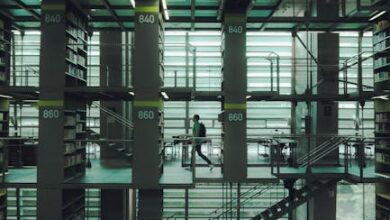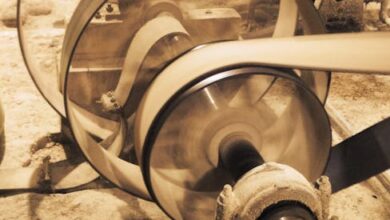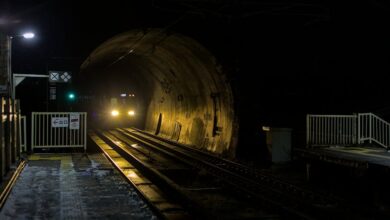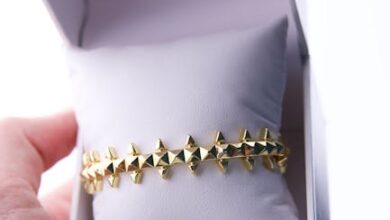The Tsunami of Alerts: How We Got Here

For fifteen years, I’ve been right there in the trenches, watching reliability incidents unfold and infrastructure crumble. I remember a time when site reliability engineering (SRE) felt like a high-stakes game of whack-a-mole, played with pagers, thick runbooks, and a prayer that Friday afternoon would somehow stay quiet. The toolkit was humble: a few alert thresholds, a strict escalation policy, and a deep bench of engineers who probably hadn’t seen daylight in days. And for a while, it worked.
Then came the microservices revolution. Then the sprawling, multi-cloud ecosystems. By 2022, I was seeing SRE teams utterly swamped, drowning in a cacophony of alerts — thousands of signals a day, with no coherent way to separate the genuine threats from the sheer noise. Observability tools got smarter, but they didn’t quite solve the core problem: humans still had to be the ultimate pattern-matchers, the triagers, the decision-makers. Between 2023 and 2025, that model didn’t just bend; it broke. And that’s when AI didn’t just improve our tools — it fundamentally rewired the entire operating model of reliability.
The Tsunami of Alerts: How We Got Here
You’re not alone if you’ve felt that creeping dread of an overflowing alert queue. The sheer volume of operational data by 2023 was farcical. The average enterprise was generating over 10 terabytes of data daily — an ocean of information impossible for any human team to process meaningfully. SREs would start their shifts staring down tens of thousands of alerts, most of which were pure noise. The best teams built elaborate filtering mechanisms, constantly tweaking thresholds and writing complex rules just to make their workday tolerable.
It was obvious to the vendors first. Dynatrace, Datadog, BigPanda, and others began to layer machine learning into their pipelines, not as an added luxury, but as an absolute necessity. By early 2024, event correlation and anomaly detection weren’t just “nice-to-have analytics” anymore; they were table-stakes functionality. Gartner’s predictions proved eerily accurate: by 2024, 40% of organizations were already leveraging AIOps for monitoring, a staggering leap from single digits just three years prior.
But simple correlation wasn’t the true breakthrough. The real inflection point arrived when these platforms started closing the feedback loop. Machine learning models, now trained on vast historical incident data, could forecast failure precursors, predict Service Level Objective (SLO) burns before they impacted users, and even suggest (or execute) remediation without waiting for a human to piece together a diagnosis.
Consider a real-world example: Financial services companies that embraced predictive SLO management saw their incident response transform from reactive firefighting to controlled prevention. Instead of watching an error budget deplete in real-time and scrambling, teams received critical lead time — sometimes 15 minutes — to trigger autoscaling, throttle non-critical traffic, or shift load. One major Western Banking Group even deployed AIOps for infrastructure automation and automatically resolved a staggering 62% of common infrastructure issues without any human involvement. That’s not a small tweak; that’s a fundamental redistribution of work between machine and human.
From Reactive to Predictive: The Dawn of Autonomous Operations
The shift we’re witnessing isn’t incremental; it’s a profound move from humans executing prescribed responses to systems that detect, reason, and act with minimal human intervention. For the first time, the hard problems of reliability — alert correlation, root cause inference, and predictive intervention — aren’t being solved by better dashboards. They’re being solved by models that can compress ten thousand signals into a single, coherent diagnosis, then recommend or execute the fix.
Predictive Mitigation: Stopping Incidents Before They Start
Modern ML models are now adept at forecasting failure signatures: specific patterns of resource pressure, latency degradation curves, or queue saturation trends. They can spot these signs sometimes hours before any user impact occurs. When such a precursor pattern is detected, the system can automatically trigger remediation: spinning up additional capacity, enabling circuit breakers, or intelligently rerouting requests. The difference is palpable: you go from “oops, we’re down” to “we prevented that from happening.” In complex multi-cloud environments, where cascading failures across regions can be catastrophic, these predictive systems buy precious time and avert disaster.
Automatic Triage and Causal Inference: The Instant Diagnosis
Today’s advanced observability platforms seamlessly join traces, logs, and metrics across disparate services to surface the most likely root causes, largely removing the need for human detective work. Instead of paging three different teams to investigate which microservice failed, the system delivers a prioritized diagnosis: “DynamoDB in us-east-1 is timing out, which is cascading to your API gateway and causing 502s.” Just a few years ago, providing that level of instant context would have taken your most seasoned engineer an hour or more of painstaking investigation. Tools like Dynatrace’s Davis AI engine and similar offerings from Datadog have made this nearly mundane. But the compounding effect on Mean Time To Resolution (MTTR) is enormous. Teams that routinely cut investigation time in half are solving more problems, responding to user impact faster, and burning through far fewer on-call rotations.
Agentic Remediation: AI Taking Action (with Guardrails)
This is where things get philosophically interesting. Some platforms are now not just suggesting what failed, but actively proposing — and in some cases, executing — what to do about it. LogicMonitor’s “Edwin AI agent” claims significant alert-noise reduction and automated fixes. PagerDuty’s Operations Cloud can generate runbook definitions and even draft status updates for stakeholders. The implication is profound but also a little unsettling: the system can, in certain contexts, decide to take action without waiting for human permission. The essential guardrails here are human-in-the-loop validation and robust rollback plans, but the trajectory towards greater autonomy is undeniable.
The Reality Check: Where Human Ingenuity Still Reigns Supreme
Theory always becomes more credible when it survives contact with reality. And 2024 and early 2025 provided ample, sometimes painful, lessons in that regard.
In July 2024, CrowdStrike released a faulty update to its Falcon software, triggering Blue Screen of Death errors across millions of Windows devices globally. The outage disrupted critical sectors like healthcare, banking, and aviation, exposing how cascading failures in tightly-coupled systems can overwhelm even the most sophisticated monitoring. Fortune 500 companies alone lost an estimated $5.4 billion. The problem wasn’t a lack of telemetry; it was that automation couldn’t catch a failure that was systemic, human-driven, and unprecedented. Incident response teams couldn’t automate their way out because no runbook existed for such an event.
Then came the infrastructure incidents. Google Cloud experienced a metadata failure in February 2024 that cascaded delays for thousands of businesses. A database upgrade misstep stalled Jira’s global operations in January. But perhaps the most instructive was June 2025: Google Cloud suffered a global outage caused by a null pointer vulnerability in a new quota policy feature that had slipped past rollout testing. The bug was introduced on May 29; the outage hit on June 12. Within two minutes of the first crashes, Google’s SRE team was on it. Within ten minutes, they identified the root cause. By forty minutes, a kill switch was deployed to bypass the broken code path. The incident took down Gmail, Google Workspace, Discord, Twitch, and Spotify for millions of users.
What’s truly telling isn’t just the outage itself — these things unfortunately happen — but how it transpired and what it revealed. The new feature lacked a feature flag, meaning it couldn’t be safely toggled off without a full code rollout. The testing didn’t account for the specific policy input that triggered the bug. And critically, automated remediation couldn’t fix it; the system absolutely needed brilliant humans to comprehend the problem and activate a manual switch. Even with the best observability and ML in the world, you still need those sharp engineers and robust safety gates.
Within 24 hours, data from Parametrix showed the outage rippled across 13 Google Cloud services. AWS, by contrast, remained relatively stable, suffering only two critical outages in 2024, both lasting under 30 minutes. Google Cloud, however, saw a 57% increase in downtime hours year-over-year. The data tells a clear story: architecture, governance, and testing discipline still matter profoundly, arguably more than sheer ML sophistication alone.
The Lingering Shadows: What AI Doesn’t (Yet) Solve
Every SRE I’ve spoken with in the past year shares a similar intuition: AI is genuinely useful, but it’s far from a silver bullet. This confidence is rightly tempered by legitimate concerns.
Model hallucination and false causality are very real risks. An ML model, trained on historical data, can easily find statistical correlations that aren’t actually causal. You might get a recommendation to perform action X, execute it, and inadvertently mask a deeper problem that reappears with greater force later. Black-box fixes are simply unacceptable in high-stakes services. Responsible teams are rightly insisting on explainability — the ability to trace every AI decision back to specific telemetry and rules. Without that auditability, you’re flying blind.
Governance is slowly catching up. The EU’s AI Act, which fully came into effect in 2025, mandates that vendors and enterprises demonstrate transparency in their AI systems. Gartner’s research confirms that explainability is now a top priority for organizations adopting advanced analytics. Yet, a significant gap remains between priority and actual practice. Many organizations still treat AIOps models as opaque boxes, feeding them data and trusting the recommendations without truly understanding the ‘why.’
Furthermore, automation itself introduces new failure modes. If your system is configured for aggressive auto-remediation (e.g., automatically killing a process, flushing a cache, or rerouting traffic), it can inadvertently amplify failures if the underlying ML model is flawed. The antidote is discipline: staged trust. Start by having the system recommend actions until confidence metrics undeniably justify full autonomy. Error budgets, canary deployments, and circuit breakers remain absolutely essential. The human-in-the-loop model works best when it’s intentional and rigorously designed.
Charting Your Course: Practical Steps for SRE Leaders
If you’re leading SRE or platform engineering and watching this landscape rapidly evolve, here’s what truly matters:
- Fix your data first. Autonomy is only as good as the telemetry feeding it. Unified traces, structured logs, and enriched metrics (OpenTelemetry adoption is now table-stakes) are non-negotiable prerequisites. Garbage in, garbage out.
- Define SLOs as trainable targets. Use predictive analytics to add temporal signal to your error budgets. Let the system learn which metrics genuinely correlate with user impact — not just the metrics you *think* matter, but the ones that demonstrably do. This creates a measurable, actionable feedback loop.
- Experiment with AI in low-blast domains first. Never start by letting AI make changes to your critical path. Begin with immutable or read-only actions: cache flushes, read-only reroutes, or notification enrichment. As reliability indicators consistently hold, gradually expand the scope. Test rigorously in staging. Observe multiple incident cycles before moving to production autonomy.
- Build feedback loops from incidents to models. Treat post-incident reviews not merely as learning opportunities, but as invaluable training data. Annotate them. Correct model mistakes. Feed that corrected, enriched data back into your ML pipelines. The organizations extracting the most value from AIOps are the ones that treat it as a living system, constantly refining, not a set-it-and-forget-it tool.
- Make explainability non-negotiable. Every automated action should produce a clear, human-readable rationale and an easily accessible rollback plan. If you can’t explain why the system did something, you’re not ready for that level of autonomy. Period.
The evidence from 2023–2025 is unambiguous: AI is transforming observability from a passive window into your system to an active, intelligent control plane. The software is indeed learning to manage itself — to spot problems, reason about causes, and even fix them.
But this isn’t the story of human replacement. It is, profoundly, the story of human role elevation. SREs who master model lifecycle, governance, and policy design will extract outsized leverage from these intelligent systems. Those who treat AI as a mysterious, all-knowing oracle will inevitably inherit its failures. The organizations I’m seeing truly win are the ones that treat autonomy as a framework to be meticulously designed, tested, and iterated upon, not a magical fix to be blindly deployed.
The future of reliability is undeniably autonomous. But only where brilliant engineers remain the architects of that autonomy itself.





